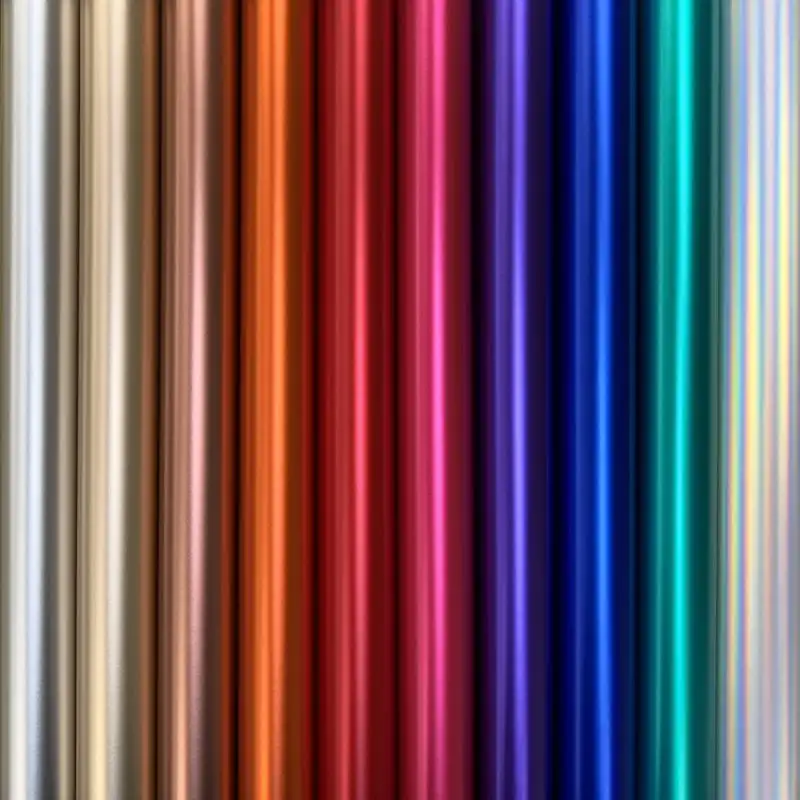Foil Direct Plotter Films for Beginners: Essential Tips and Tricks

Starting your journey with plotter films can feel both exciting and a little intimidating. Those pristine rolls of Foil Direct film hold incredible potential, but knowing where to begin makes all the difference between frustration and fulfillment. Whether you're creating custom decals for your small business or personalizing items at home, these essential tips and tricks will help you build confidence from your very first cut, turning that initial uncertainty into creative empowerment.
Choosing Your Starting Point: Material Selection Made Simple
With so many options available, your first trip to the Foil Direct collection might feel overwhelming. For beginners, it's wise to start with a basic matte or gloss vinyl in a light color—white or light gray are excellent choices. Lighter colors make weeding (removing excess material) much easier because you can clearly see where your cuts are. Avoid beginning with specialty materials like glitter or metallic films, as they can be slightly more challenging to work with. A standard permanent adhesive calendar vinyl is your most forgiving starting point, offering a great balance of easy handling and professional results as you learn the fundamentals of cutting and application.
Mastering Your Machine: The Setup That Makes All the Difference
Before loading any film, take time to understand your plotterfolien basic settings. The two most important adjustments are blade depth and cutting pressure. Start with your plotter's recommended settings for vinyl, then perform a test cut on a small piece of your Foil Direct film. Look for a perfect "kiss cut"—where the blade cuts through the vinyl but doesn't dig deeply into the backing paper. If the vinyl doesn't weed cleanly, slightly increase the pressure. If you see tiny bits of the backing paper coming up with your design or hear the blade dragging, decrease the pressure. Remember to replace your blade regularly—a dull blade causes more frustration for beginners than any other single factor.
The Art of Weeding: Patience Over Power
Weeding might test your patience initially, but it's where the magic happens. Always weed on a flat, clean surface with good lighting. Start from a corner and gently pull the excess material back on itself rather than straight up. If you encounter resistance, don't force it—go back and check if all the cuts are complete. For intricate designs with small details, use a weeding hook or fine-tip tweezers instead of your fingers. A helpful beginner's trick is to slightly warm stubborn areas with a hairdryer on low heat for a few seconds—this makes the vinyl more pliable and easier to weed. Remember, slow and steady always wins the weeding race.
Surface Preparation: The Secret to Flawless Application
The success of your project depends heavily on what happens before the film ever touches your surface. No matter how perfect your cut, improper surface preparation will lead to disappointing results. Always clean your application surface with isopropyl alcohol and a lint-free cloth, even if it looks clean. Natural oils from your hands, dust, and other invisible contaminants will prevent proper adhesion. For curved surfaces like water bottles or mugs, use application tape (transfer tape) slightly larger than your design—it acts as a carrier that lets you position the design perfectly before committing. Apply the tape smoothly from one end to the other, using a squeegee to eliminate bubbles.

Application Techniques: Building Confidence Gradually
When it's time to apply your design, start with simple, flat surfaces before progressing to curved or textured ones. Use the hinge method for larger designs: peel back a small portion of the backing paper, position that section perfectly, then use masking tape to create a "hinge" along the top edge. This allows you to smoothly pull away the remaining backing paper while applying the graphic with your squeegee, working from the center outward to push out air bubbles. If small bubbles persist, don't panic—many will disappear within 24-48 hours as the adhesive cures. For persistent bubbles, you can carefully puncture them with a fine needle and smooth them out.
Learning From Common Beginner Mistakes
Every beginner makes mistakes—it's how we learn. If your design tears during weeding, your blade likely needs replacing or your cut settings need adjustment. If the vinyl won't stick to your surface, you probably need better surface cleaning. If the transfer tape won't release your design, you might be using tape that's too aggressive—switch to lower-tack tape for delicate designs. Keep a notebook of what settings worked for different materials and what didn't. Most importantly, don't get discouraged by imperfect results—even experienced users had to start somewhere. Each project teaches you something new about the material and process.
Building Your Skills Gradually
Start with simple shapes and text before progressing to complex designs with fine details. Practice with inexpensive materials before using specialty films. Watch tutorial videos specifically for your plotter model—seeing the process in action makes everything clearer. Join online communities where you can ask questions and see how others solve common problems. Most importantly, be patient with yourself as you learn. The beauty of Foil Direct films is their consistency—once you master the basics with one type, those skills transfer directly to their entire range, opening up endless creative possibilities as your confidence grows.
Remember that every expert was once a beginner, and the learning curve is shorter than you might think. With these fundamental techniques and a willingness to learn through practice, you'll soon be creating professional-looking projects that fill you with pride. The quality of Foil Direct films works in your favor, providing a reliable foundation as you develop the skills to bring your creative visions to life, one successful project at a time.
- Art
- Causes
- Crafts
- Dance
- Drinks
- Film
- Fitness
- Food
- Games
- Gardening
- Health
- Home
- Literature
- Music
- Networking
- Other
- Party
- Religion
- Shopping
- Sports
- Theater
- Wellness


